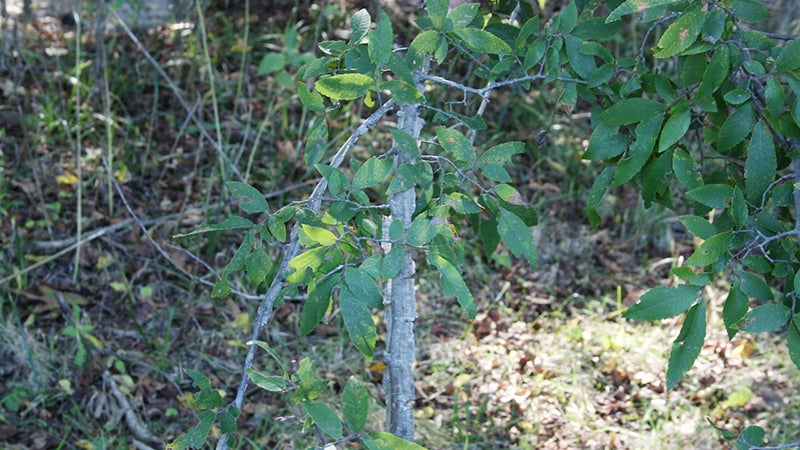Winged elm is fast-growing, attractive
Published 3:34 pm Friday, January 11, 2019

- Winged elm is the larval host for the question mark butterfly, and provides seeds for small birds and small mammals.
|
Getting your Trinity Audio player ready...
|
Winged elm
Ulmus alata
Winged elm is well named for the corky ridges on the twigs, easily seen in the winter. These “wings” occur on the branches in one plane. This is a small to medium tree with a rounded open crown. The small, narrow leaves are thick and smooth above, with somewhat uneven bases and the edges with double sets of teeth. The undersides of the leaves are paler green with some tufts of hair. In the fall the leaves often turn dull yellow, and small, narrow, oval fruits with hairy margins hang from the branches by very short stalks.
This elm is common in dry to moist sandy soils with other hardwoods, particularly on streamsides and well-drained lowland soils. It is a fast-growing, attractive shade tree. Winged elm grows in eastern Virginia counties and ranges from southeastern Virginia to southern Indiana, southern Illinois and Missouri, and south to Florida and Texas. Flowers appear February through April.
The common and Latin species names refer to the distinctive broad, corky wings present on some twigs; Wahoo was the Creek Indian name. In the 18th and 19th centuries, the fibrous inner bark was made into rope for fastening covers of cotton bales. Native Americans seeped inner bark for diarrhea and to ease childbirth.
Winged elm is the larval host for the question mark butterfly, and provides seeds for small birds and small mammals.
HELEN HAMILTON is past president of the John Clayton Chapter, Virginia Native Plant Society. Contact her at helen48@cox.net. For more information about native plants, visit www.vnps.org.

